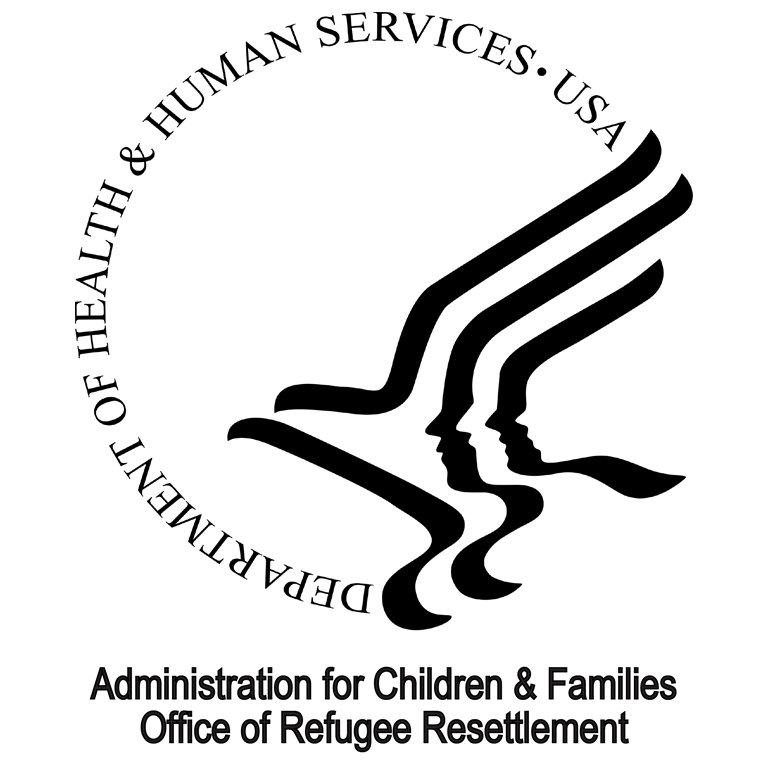The 12-Month, $404 Million Contract to Transport Migrant Kids — that You’re Paying For
As part of the Center’s efforts to bring transparency to the U.S. immigration system using the Freedom of Information Act (FOIA), Colin Farnsworth — our chief FOIA counsel — requested a contract between the U.S. government and a private entity to transport unaccompanied alien children (UACs) from shelters run by the Office of Refugee Resettlement (ORR) in the Department of Health and Human Services to their sponsors in the United States.
We received all 119 pages of it, and the bottom line is that taxpayers forked out $404 million over a 12-month period, in part to complete a criminal conspiracy, under a contract that failed to detail how “care provider escorts” would identify the “sponsors” they were giving the kids to or how they would assess whether those kids would be safe. That’s a big deal, given the likelihood that this was the last contact many of those children would have with the U.S. government.
The False Humanity of Federal UAC Law and Policy. Prior to the creation of the Department of Homeland Security (DHS), the former Immigration and Naturalization Service (INS) was responsible for the care of shelter of the illegal alien children it encountered.
That rubbed a lot of advocates — most of whom despised the INS — the wrong way, so they sued the agency in federal court throughout the 1980s and 90s (usually unsuccessfully) until eventually the Clinton administration caved and settled with them. That settlement agreement, in Flores v. Reno, subsequently governed the conditions of INS detention and release of alien children.
And there the matter rested, until the months following the September 11th attacks, when Congress reorganized the executive branch structure to place most agencies with a nexus to domestic security into one department, DHS.
Among other things, the resulting Homeland Security Act of 2002 (HSA) abolished the former INS and dispersed its enforcement and adjudication responsibilities across various federal agencies.
In the course of that restructuring, for reasons known only to its Democratic sponsors, an amendment was passed that defined the term “unaccompanied alien child” and gave responsibility for detaining and releasing those UACs to ORR.
Why ORR? No idea, and I was there when that amendment was adopted with no debate whatsoever. The office had no experience in sheltering children (or anybody, really), and in the 21 years that have passed, it hasn’t gotten much better at performing it.
Fortunately, ORR had a light UAC workload in the beginning. According to the Congressional Research Service (CRS), only about 6,700 UACs were apprehended by DHS, placed into removal proceedings, and referred to ORR annually in the early 2000s.
That changed beginning in late 2008 when congressional Democrats passed an extremely problematic provision (which even President Obama disliked), section 235 of the Trafficking Victims Protection Reauthorization Act of 2008 (TVPRA).
Section 235 of TVPRA directs DHS to transfer all UACs it encounters from “non-contiguous” countries (i.e., every country aside from Canada and Mexico) to ORR within 72 hours, nearly all for placement with “sponsors” in the United States.
Those rules apply regardless of whether the UACs in question haven’t been trafficked and don’t fear persecution — even though section 235 of the TVPRA is captioned “Efforts to Combat the Trafficking of Children”, and despite the fact it now simply serves as a magnet drawing minors to enter illegally — willfully or otherwise.
By FY 2012, three fiscal years after the TVPRA was passed, Border Patrol apprehended more than 24,400 UACs at the Southwest border alone, a figure that exceeded 38,750 in FY 2013 and 68,500 in FY 2014.
And, not surprisingly, because section 235 of the TVPRA gives preferential treatment to children who aren’t from Mexico or Canada, the number and percentage of UACs apprehended at the border from non-contiguous countries has skyrocketed ever since. According to CRS:
In FY2009 … children from Mexico and the Northern Triangle countries (El Salvador, Guatemala, and Honduras) represented 82% and 17%, respectively, of the 19,668 UAC apprehensions that year. By FY2021 [when nearly 185,000 UACs were apprehended at the Southwest border], those proportions had flipped, with Mexican and Northern Triangle children respectively representing 18% and 77% of all UAC apprehensions.
Obama Asks Congress for Help — to No Avail. Remember when I said that President Obama disliked TVPRA? Let me explain.
In June 2014, Border Patrol agents apprehended 10,620 unaccompanied children at the Southwest border (the largest monthly total up to that point), and the then-administration struggled to respond to that surge. Obama called it an “urgent humanitarian situation”, and asked Congress for an additional $1.4 billion to deal with it.
Realizing that section 235 created a loophole for children from non-contiguous countries, Obama sent a letter to congressional leaders, asking them to provide DHS “additional authority to exercise discretion in processing the return and removal of unaccompanied minor children from non-contiguous countries like Guatemala, Honduras, and El Salvador”. Congress never responded, and the only thing that has changed in the interim is that the number of UACs entering illegally has mushroomed ever since.
The Role of Parents and Guardians in UAC Entries. The HSA definition of UAC, now found in 6 U.S.C. § 279(g)(2), reads as follows:
the term “unaccompanied alien child” means a child who — (A) has no lawful immigration status in the United States; (B) has not attained 18 years of age; and (C) with respect to whom — (i) there is no parent or legal guardian in the United States; or (ii) no parent or legal guardian in the United States is available to provide care and physical custody.
As you can see, an alien child is only a UAC if the child has no parent or guardian in this country to care for the child — which begs an important question: How do those kids get here to begin with?
As I explained back in March 2021, most UACs actually do have parents and guardians in the United States, and it’s those parents and guardians who are paying the smugglers to bring those children to this country. Which brings me to a December 2013 order issued by federal district court Judge Andrew Hanen in U.S. v. Nava-Martinez.
The defendant, Mirtha Nava-Martinez, was a lawful permanent resident caught smuggling a 10-year-old Salvadoran girl across the Matamoros bridge into the United States. As Judge Hanen explained, Nava-Martinez was part of a conspiracy to smuggle the girl (identified as “Y.P.S.”) from El Salvador to her mother (here unlawfully) in Virginia for $8,000, but the mother herself wasn’t prosecuted and wasn’t even subject to removal.
The judge made clear that this was not a unique scenario, and complained about the outcome:
This is the fourth case with the same factual situation this Court has had in as many weeks. In all the cases, human traffickers who smuggled minor children were apprehended short of delivering the children to their ultimate destination. In all cases, a parent, if not both parents, of the children was in this country illegally. That parent initiated the conspiracy to smuggle the minors into the country illegally. He or she also funded the conspiracy. In each case, the DHS completed the criminal conspiracy, instead of enforcing the laws of the United States, by delivering the minors into the custody of the parent living illegally in the United States.
“ORR Unaccompanied Children Program Policy Guide”. As noted above, ORR — usually through contractors — identifies sponsors in the United States who will ultimately care for the UACs initially encountered by DHS while they are in ORR shelters for care.
Like any bureaucratic agency, ORR has a massive set of rules to guide that process, from sheltering the UACs to transferring them to sponsors, called the “ORR Unaccompanied Children Program Policy Guide” (Guide).
I’ve complained — at length — in the past about all of the deficiencies in the shelter system and in the process ORR uses to identify and vet sponsors in the United States. For purposes of the contract at issue, I will turn a blind eye and pretend both of those processes work swell.
Section 2 of the Guide is captioned “Safe and Timely Release from ORR Care”, and it includes a rather extensive list of documents would-be sponsors can offer to establish their identities, some of which are secure and reliable (U.S. passports) and some of which aren’t (Mexican matriculas; “foreign driver’s license that contains a photograph”).
Section 2.8.2 therein governs the transfer of UACs to their sponsors, and it explains that:
Whenever possible, sponsors are expected to come to the care provider or to an offsite location designated by the care provider for the transfer of physical custody of the child.
…
Under extenuating circumstances (e.g., a sponsor cannot travel due to a medical condition), ORR may approve an unaccompanied child to be escorted to a sponsor. Similarly, if a sponsor pick-up would result in delay of a timely release of the child, ORR may approve an escort for an unaccompanied child.
The Contract. This contract is for services related to both such transfers from ORR care providers to sponsors and “between ORR facilities”, as well as for “mass transportation during emergent influx situations or other emergency needs (e.g. weather or public-health related[)]”. Note that, “extenuating circumstances or not”, “transferring [UACs] to their sponsors once ORR approves reunification” is the first listed purpose and objective of that $404,512,797, 12-month contract.
Apparently, the contract also covers transportation between “emergency intake shelters” and “ORR licensed care provider facilities”, which brings me to the bracketed closed parenthesis mark above I had to add. I once practiced government contracting law, and fly-specked contracts to make sure the terms were clear, but I’m still not sure whether the intake-to-facilities provision is a major part of this contract or not.
That’s odd because the contract is specific about certain other performance points, like how often bathroom breaks are required and a requirement that the contractor identify “all cultural or special dietary needs”.
That is far from the most disturbing omission from this contract, however. Section 2.8.2 of the Guide requires the “care provider escort [to] compare[] the sponsor’s identification with the copy previously submitted by the sponsor” to ORR. That requirement isn’t specifically included in the contract, though respectfully, it is much more important than making sure that kids receive culturally appropriate snacks.
As importantly, that omission raises the question of how exactly the escorts — who need nothing more than an associate degree or a high school diploma and two years of “relevant experience” as well as two years’ experience “in a field related to human services” — are supposed to evaluate the matriculas or foreign-issued driver’s licenses they are presented to determine whether they’re real or fake.
That transfer is likely the last contact the federal government will have with those vulnerable children in the United States, so in my mind it should be among the most important provisions in this contract. Except it isn’t in the contract at all.
Still, its omission is not as disturbing as yet another condition, also in section 2.8.2 of the Guide, which states: “if the care provider escort has concerns regarding the safety of the situation upon meeting the sponsor, the care provider escort will return with the child to the care provider facility”.
Nothing in the contract provides any guidance whatsoever to assist the escort in determining whether at the point of contact the situation or the sponsor is unsafe for the child.
Again, that drop-off could be the last time the U.S. government or any of its agents has contact with that child, and yet there’s no guidance in the contract — or in the Guide, for what it’s worth — explaining what exactly “concerns regarding the safety of the situation” entail.
The contractor isn’t being asked to drop off groceries, or a load of bricks, or even cash. The escort is being asked to deliver a vulnerable human being. Should the escort err on the side of caution and risk the wrath of the sponsor and potentially ORR, or should nothing short of a burning residence or the presence of unchained alligators trigger return? No idea.
None of this is to suggest that there is anything wrong with the contractor providing services under this contract.
And I have no doubt that the sponsors of the UAC amendment to the HSA and the authors of section 235 of TVPRA had good intentions and the best interests of migrant children at heart. Those provisions, however, create a massive loophole that encourages parents and guardians to pay criminals to bring vulnerable kids to the United States. Respectfully, as a taxpayer I want no part of that conspiracy, but I have no choice.





